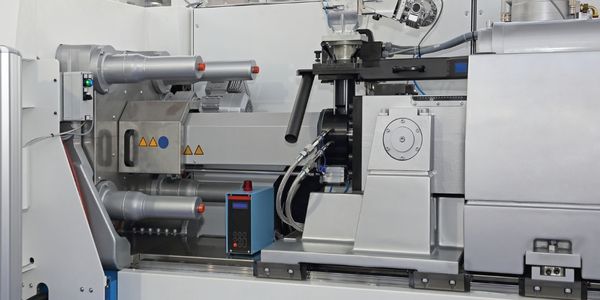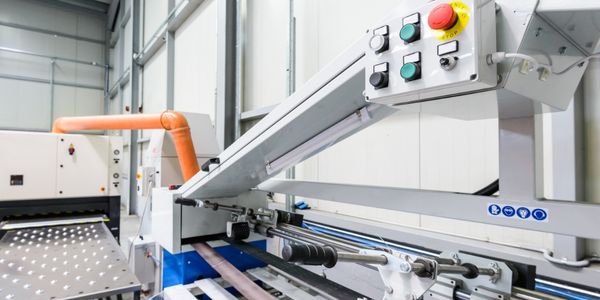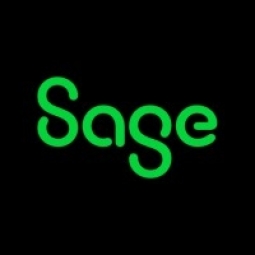Customer Company Size
Mid-size Company
Region
- America
Country
- Canada
- United States
Product
- Sage 500 ERP
- Advanced Manufacturing
- Engineering Change Management
- Shop Floor Control
- Multicurrency Manager
Tech Stack
- ERP
- Manufacturing Software
- Inventory Control
Implementation Scale
- Enterprise-wide Deployment
Impact Metrics
- Productivity Improvements
- Cost Savings
Technology Category
- Functional Applications - Enterprise Resource Planning Systems (ERP)
- Functional Applications - Manufacturing Execution Systems (MES)
Applicable Functions
- Discrete Manufacturing
Use Cases
- Manufacturing System Automation
- Inventory Management
Services
- System Integration
About The Customer
RadComm Systems is a company that has been manufacturing and distributing radiation detection systems to industries across North America and around the world since 1992. The company is known for its innovative technology, dedicated personnel, and responsive service and support. RadComm Systems has seen steady growth and has operations in both Canada and the United States. The company has four locations and is headquartered in Oakville, Ontario. From the beginning, RadComm Systems has trusted Sage software solutions to help manage its business. These solutions have grown and scaled to meet the increasingly complex requirements of the enterprise operation.
The Challenge
RadComm Systems, a manufacturer and distributor of radiation detection systems, has been using Sage business management solutions since its inception. However, as the company grew, it found that relying on two separate software applications was leading to inefficiencies. Year-end reporting was time-consuming and difficult, and obtaining accurate work-in-progress (WIP) figures was nearly impossible. Often, the figures in the two systems were not in agreement, perhaps resulting from errors while rekeying the information. The company was seeking a more powerful, integrated ERP and manufacturing solution to streamline its operations.
The Solution
RadComm Systems migrated from Sage Pro ERP to Sage 500 ERP to run its sophisticated manufacturing, distribution, and financial operations. The Sage 500 ERP system incorporates powerful manufacturing modules such as Advanced Manufacturing, Engineering Change Management, and Shop Floor Control. All costs associated with a work order are captured by the system, enabling the company to calculate the profit margin associated with every project. The system drives efficiency by automatically generating a work order as staff enters a sales order. When the sales order is later invoiced, the related work order is closed, eliminating yet another manual step in the cycle. The inventory receiving function is streamlined with Sage 500 ERP. As a receipt is processed, inventory is updated in real time and is instantly available to the production department. In addition, cost variances between the purchase order and vendor invoice are fairly common in this industry, and the software automatically and accurately accounts for such variances.
Operational Impact

Case Study missing?
Start adding your own!
Register with your work email and create a new case study profile for your business.
Related Case Studies.

Case Study
Plastic Spoons Case study: Injection Moulding
In order to meet customer expectations by supplying a wide variety of packaging units, from 36 to 1000 spoons per package, a new production and packaging line needed to be built. DeSter wanted to achieve higher production capacity, lower cycle time and a high degree of operator friendliness with this new production line.

Case Study
Robot Saves Money and Time for US Custom Molding Company
Injection Technology (Itech) is a custom molder for a variety of clients that require precision plastic parts for such products as electric meter covers, dental appliance cases and spools. With 95 employees operating 23 molding machines in a 30,000 square foot plant, Itech wanted to reduce man hours and increase efficiency.

Case Study
Hospital Inventory Management
The hospital supply chain team is responsible for ensuring that the right medical supplies are readily available to clinicians when and where needed, and to do so in the most efficient manner possible. However, many of the systems and processes in use at the cancer center for supply chain management were not best suited to support these goals. Barcoding technology, a commonly used method for inventory management of medical supplies, is labor intensive, time consuming, does not provide real-time visibility into inventory levels and can be prone to error. Consequently, the lack of accurate and real-time visibility into inventory levels across multiple supply rooms in multiple hospital facilities creates additional inefficiency in the system causing over-ordering, hoarding, and wasted supplies. Other sources of waste and cost were also identified as candidates for improvement. Existing systems and processes did not provide adequate security for high-cost inventory within the hospital, which was another driver of cost. A lack of visibility into expiration dates for supplies resulted in supplies being wasted due to past expiry dates. Storage of supplies was also a key consideration given the location of the cancer center’s facilities in a dense urban setting, where space is always at a premium. In order to address the challenges outlined above, the hospital sought a solution that would provide real-time inventory information with high levels of accuracy, reduce the level of manual effort required and enable data driven decision making to ensure that the right supplies were readily available to clinicians in the right location at the right time.

Case Study
Fully Automated Visual Inspection System
Tofflon has developed a fully automatic machine that uses light to inspect vials, medicine bottles, or infusion containers for glass fragments, aluminum particles, rubber grains, hairs, fibers, or other contaminants. It also detects damaged containers with cracks or inclusions (microscopic imperfections), automatically removing faulty or contaminated products. In order to cover all production processes for freeze-dried pharmaceuticals, Tofflon needed to create an open, consistent, and module-based automation concept.

Case Study
SAP Leonardo Enabling Rocket Science
At times, ULA has as many as 15 different operating systems dedicated to overlapping processes, such as rocket design, testing, and launch. Multiple systems created unnecessary costs and unwanted confusion among workers at offices, factories, and launch sites in different location. In order to improve collaboration and transparency during vital activities that directly influence mission success, ULA wanted to improve data sharing and streamline manufacturing processes.








